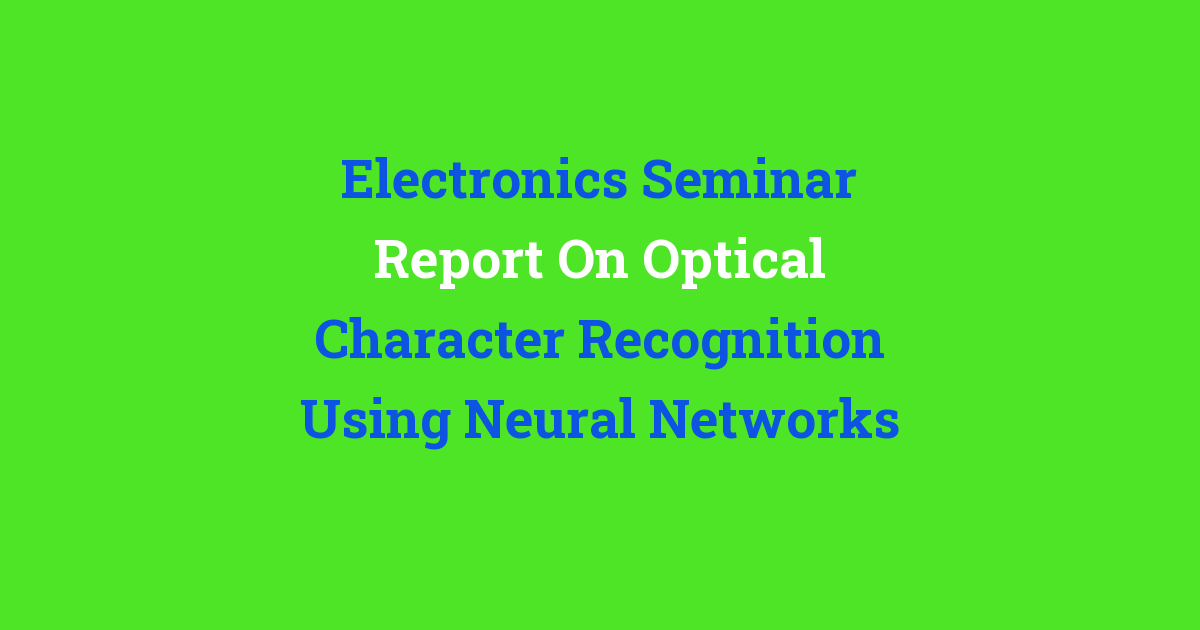Seminar report on the application of neural networks in optical character recognition in electronics.
Electronics Seminar Report on Optical Character Recognition Using Neural Networks
Introduction
Optical Character Recognition (OCR) is a technology that is used to convert different types of documents, such as scanned paper documents, PDF files, or images captured by a digital camera, into editable and searchable data. OCR has become an essential tool for businesses and organizations that deal with large volumes of text documents, as it helps in automating the process of data entry and document management. Without OCR, all this data would have to be manually entered into the computer, which is not only time-consuming but also prone to errors.
Problem Statement
While OCR technology has made significant advancements over the years, there are still some limitations and challenges that need to be addressed. One of the main issues with traditional OCR systems is their inability to accurately recognize handwritten text and complex fonts. This is where neural networks come into play.
Existing System
The existing OCR systems use traditional algorithms and machine learning techniques to recognize characters from images or scanned documents. While these systems work well for printed text, they often struggle with handwritten text and cursive fonts. This limitation has been a major hindrance to the widespread adoption of OCR technology in various industries.
Disadvantages
Some of the disadvantages of the existing OCR systems include:
- Difficulty in recognizing handwritten text
- Lack of accuracy with complex fonts
- Slow processing speed
- High error rates
Proposed System
Our proposed system aims to address the limitations of the existing OCR systems by leveraging the power of neural networks. Neural networks are a type of artificial intelligence that mimics the way the human brain works. By using neural networks, our OCR system will be able to learn and adapt to different writing styles and fonts, making it more accurate and reliable.
Advantages
Some of the advantages of our proposed OCR system include:
- Improved accuracy in recognizing handwritten text
- Ability to recognize complex fonts
- Faster processing speed
- Lower error rates
Features
Our OCR system will have the following features:
- Neural network-based character recognition
- Adaptive learning capabilities
- Compatibility with a wide range of fonts and writing styles
- High-speed processing
- User-friendly interface
Conclusion
In conclusion, our proposed OCR system using neural networks has the potential to revolutionize the way we digitize and manage text documents. By overcoming the limitations of traditional OCR systems, our system will make data entry and document management more efficient and accurate. With further research and development, we believe that neural network-based OCR technology will become the new standard in the industry.

